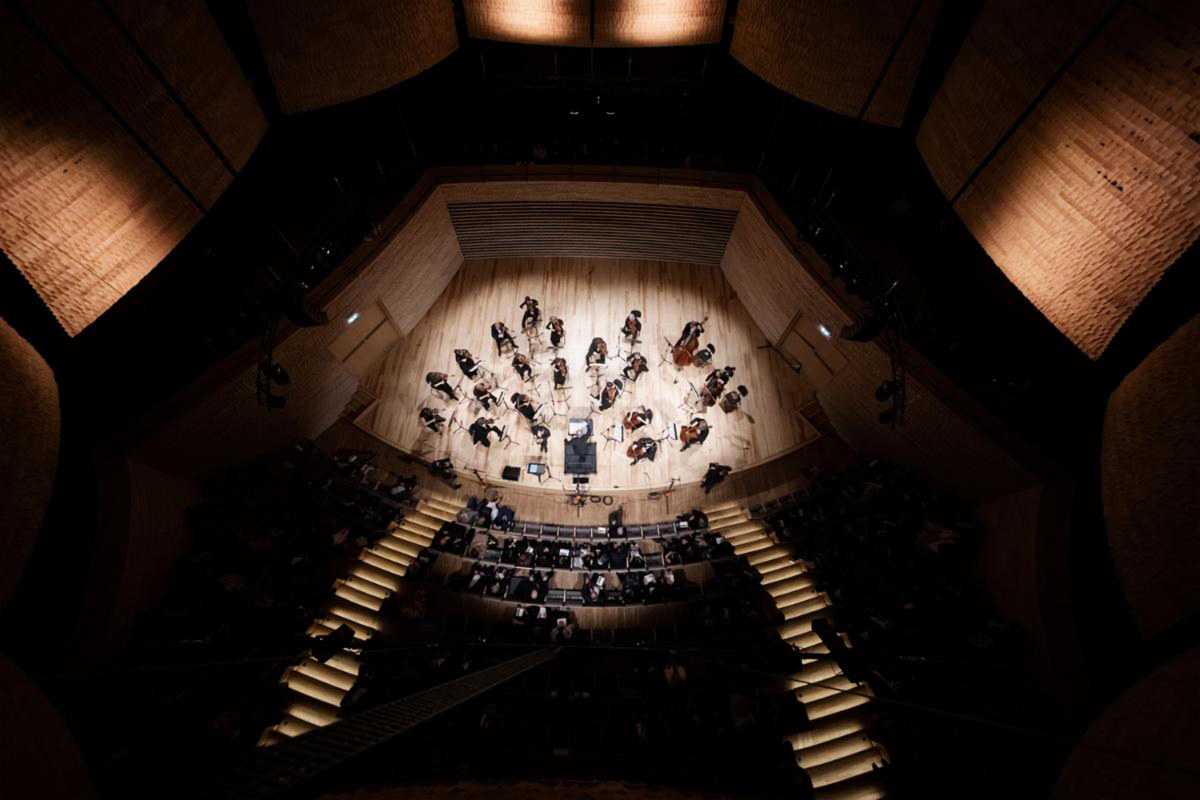Live Warsaw recordings enhanced with DPA
- Details

With his current work, Mieczkowski has expanded into recording and mixing in Dolby Atmos, most recently capturing a live performance by trio Surreal Players and Mino Cinélu at the Nowa Miodowa concert hall.
Mieczkowski started this immersive project as he does any: identifying the direction of the production. He spent time exploring the acoustics of the famed concert hall, which were designed by Yasuhisa Toyota, director and chief designer of acoustical consulting firm Nagata Acoustics.
“I try to create a vision for my recordings,” Mieczkowski explains. “Before rehearsal, I walk around the venue and listen to the ratio of waves reflected off the floor, walls and ceiling to those coming directly from the instrument. Only then can I choose what kind of microphone I need and know the best placement for the instrument and mic; maintaining acoustic harmony is crucial.”
For the Surreal Players and Mino Cinélu recordings, which were planned for Dolby Atmos applications, Mieczkowski determined he would rely on DPA Microphones’ 4006A Omnidirectional, 4011A Cardioid, and 4015C Wide Cardioid Microphones.
“This performance was an acoustic project featuring a piano, cello and percussion instruments,” Mieczkowski says. “Since this recording was made in Dolby Atmos 5.1.4, we were given additional space to use overhead microphones, as they add another dimension to the recording. In this case, I went with the DPA mics primarily for their sound, reliability and quality. A good microphone is one that transmits sound waves as faithfully as possible so that we can direct the microphone to match the source signal. The DPAs have amazing warmth and fidelity for rendering space and sound.”
Mieczkowski has found great success with DPA mics for immersive recordings, noting that the “directional microphones like the 4011 are ideal. Their naturalness, fullness and elasticity of sound allow you to manoeuvre the positioning of the instrument. The acoustic design of the mics also makes the off-axis pick-up sound very natural. This makes it possible to get the expected sound of the instrument at the microphone stage without having to do work in post. Additionally, DPA pencil mics cope very well with all kinds of interferences that lights, cell phones and other systems can cause.”
Having been a fan of DPA for more than 30 years, starting with the B&K pencil mics, Mieczkowski has relied on the brand for many projects beyond his work with Surreal Players and Mino Cinélu. These include multiple albums for Polish Jazz Singer Anna Maria Jopek, which featured American Jazz Artist Pat Metheny, American Saxophonist Branford Marsalis and Japanese Musician Makoto Ozone. For these works, Mieczkowski incorporated a variety of DPA solutions.
In the future, Mieczkowski looks forward to utilising DPA for more recordings, both immersive and surround. “I value DPA microphones for their durability. They have a very high reliability factor, and I love their small size, ease of installation and aesthetic appearance. They also make an excellent base for any surround recording. When it comes to immersive projects, the better the microphones, the fewer problems―and the more enjoyable they are to use. Owing to this, I will always recommend DPA to those looking to record in Dolby Atmos,” he concludes.
















